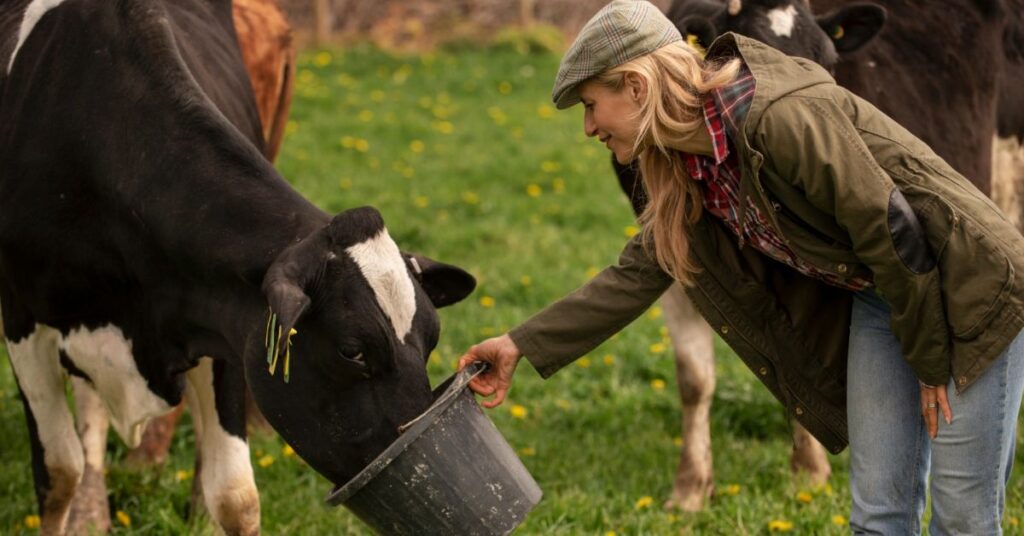Raising cattle is rewarding. But like any business, you must do it right to succeed. Venturing into cattle rearing without the proper knowledge will only fail, sinking your investment. You must learn to care for your cattle before bringing them in to succeed. To rear productive cattle, you must ensure they are happy and healthy. The best way to achieve this is to provide them with sufficient pasture, a nutritious diet, and clean water and protect them from illnesses. Remember, learning never stops. Use any available resource to learn how to care for your cattle.
You could take an educational course on cattle care or intern on a cattle farm. Whichever route you take, these eight tips will help you create a thriving environment for your herd. This is whether you’re a seasoned rancher or just starting.
Provide Your Cattle With Quality Feed
Your venture’s profitability will be determined by how well you feed your cattle. If your cattle graze in the field, provide 2 acres of grazing field per animal. But don’t let them roam everywhere. You can create paddocks to better manage the forage for the long term. Rotate the cattle between the paddocks every one to three days, depending on the paddock’s size and your herd’s size.
You’ll have to substitute cattle feed if you don’t have enough land. Animals need 3-4% of their body weight. If you are unsure of the amount to give, seek help from a cattle specialist. Feed them using a hay feeder to prevent wastage.
Provide Your Cattle With Fresh Water
Cattle drink water several times a day. For this reason, ensure constant access to multiple water sources spread throughout the pastures. Generally, a mature animal will take between 30 and 70 litres daily. The weather and the feed type will largely influence the amount. The animal will consume more water in summer than in winter after feeding on dry grass than on fresh grass.
Water should be clean, and you should test water sources regularly for contaminants like nitrates or bacteria. Cattle waterers can ensure a clean water supply without constantly moving water lines. Ensure water sources don’t freeze in cold weather. You can use heaters or insulated tanks if necessary.
Protect Cattle from Predators
Predators and thieves are common concerns for ranchers, so you must implement measures to protect your cattle. You can install mesh wire electric fencing, motion-activated lights, and alarms around your property to scare predators away and alert you. Moreover, you can have a guardian animal like a dog or donkey to protect cattle.
Cattle also need shelter from harsh weather. The shelter could be an enclosed barn or one with three sides closed and one open. It should have proper air circulation to prevent moisture buildup and respiratory problems. It should be large enough to accommodate the herd, as overcrowding can lead to stress.
Cattle Need Minerals
Salt is one of the most essential minerals for cattle and should be available throughout. Salt licks provide sodium chloride, while mineral blocks offer a more comprehensive range of essential minerals like phosphorus, magnesium, and selenium. An adult animal weighing 1300 to 1400 pounds will need about 35-45 g daily. Offer a salt lick or mineral supplement block to address specific deficiencies in your soil or forage. For instance, if your soil lacks selenium, use a soil block with selenium. If you are not sure, consult a veterinarian or an extension agent.
Don’t Forget Vaccination
If you give your cattle high-quality pasture, clean water, and a sanitary environment, you’ll minimize their chances of disease. However, it would help if you prevented them from preventable diseases with timely vaccinations. Consult a local veterinarian to determine which vaccinations are necessary.
Ensure Regular Checkups
It’s imperative to schedule annual and more frequent checkups for the entire herd and pregnant or sick animals. Early detection and treatment of health issues can save lives and prevent outbreaks. More importantly, you must check for any physical or behavioural changes indicating illness. Call the vet immediately if you notice any signs of disease or unusual behaviour. learn about common cattle-related diseases, like bloat, mastitis, foot rot, and respiratory problems. Inspect hooves every 2-3 weeks for cracks, chips, or signs of disease like foot rot. Have a professional trim the hooves once or twice a year.
Handle Cattle Gently
Animals deserve respect and kindness. Although cattle are not usually aggressive, maltreating them can result in a severe accident because their first instinct when threatened is to run. Avoid loud noises, sudden movements, or excessive force. Calm handling leads to less stress and better health.
Don’t Stop Learning
Learning to care for your cattle is continuous. There will be a lot of trial and error at the beginning, but you must keep learning. Participate in educational workshops, consult with experienced ranchers, and stay updated on best practices for cattle care.
